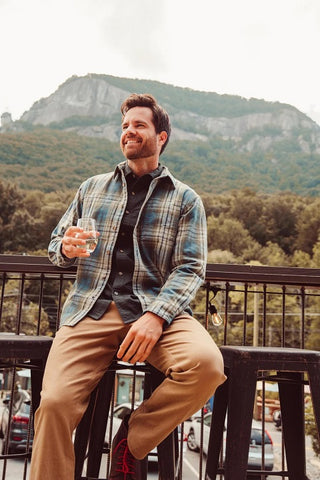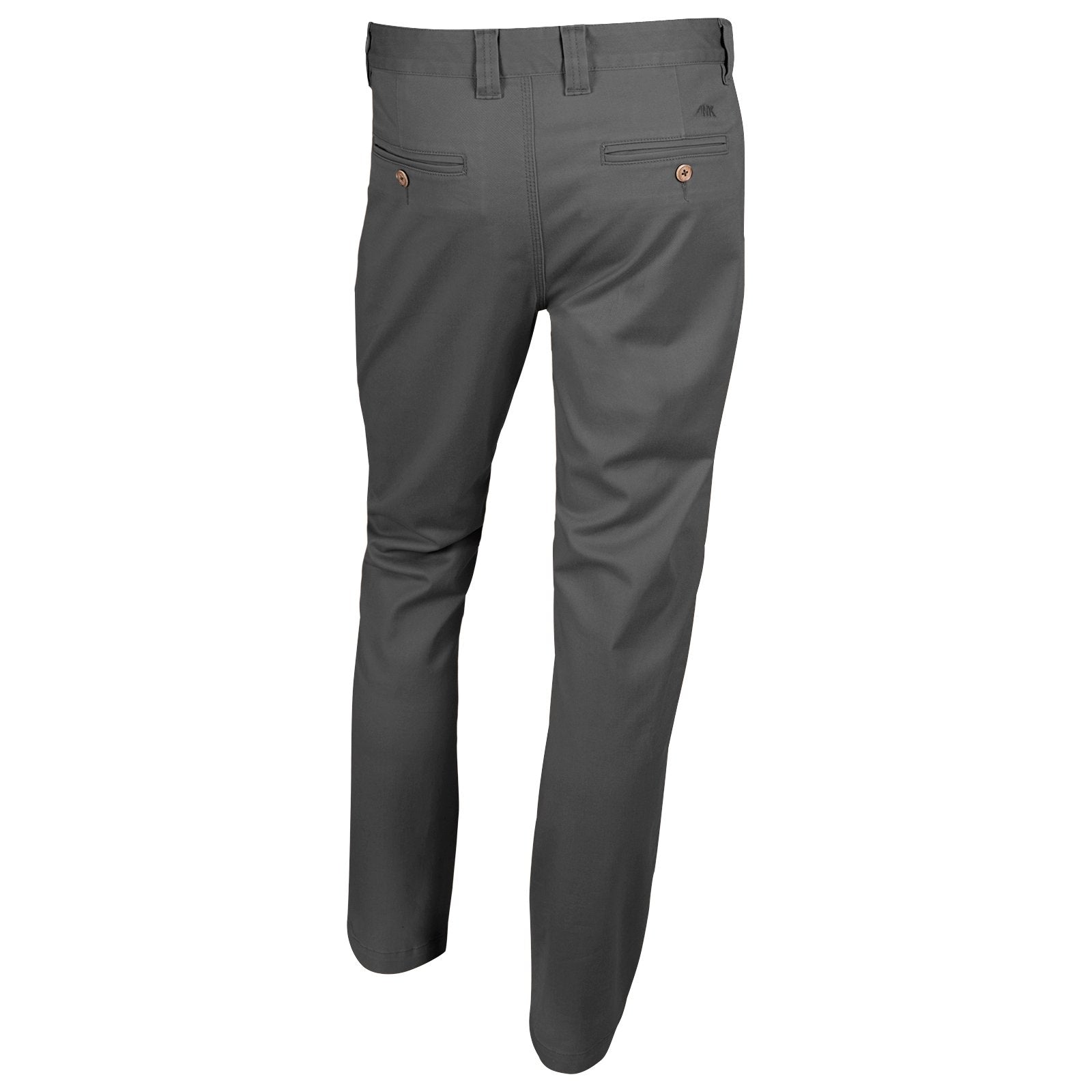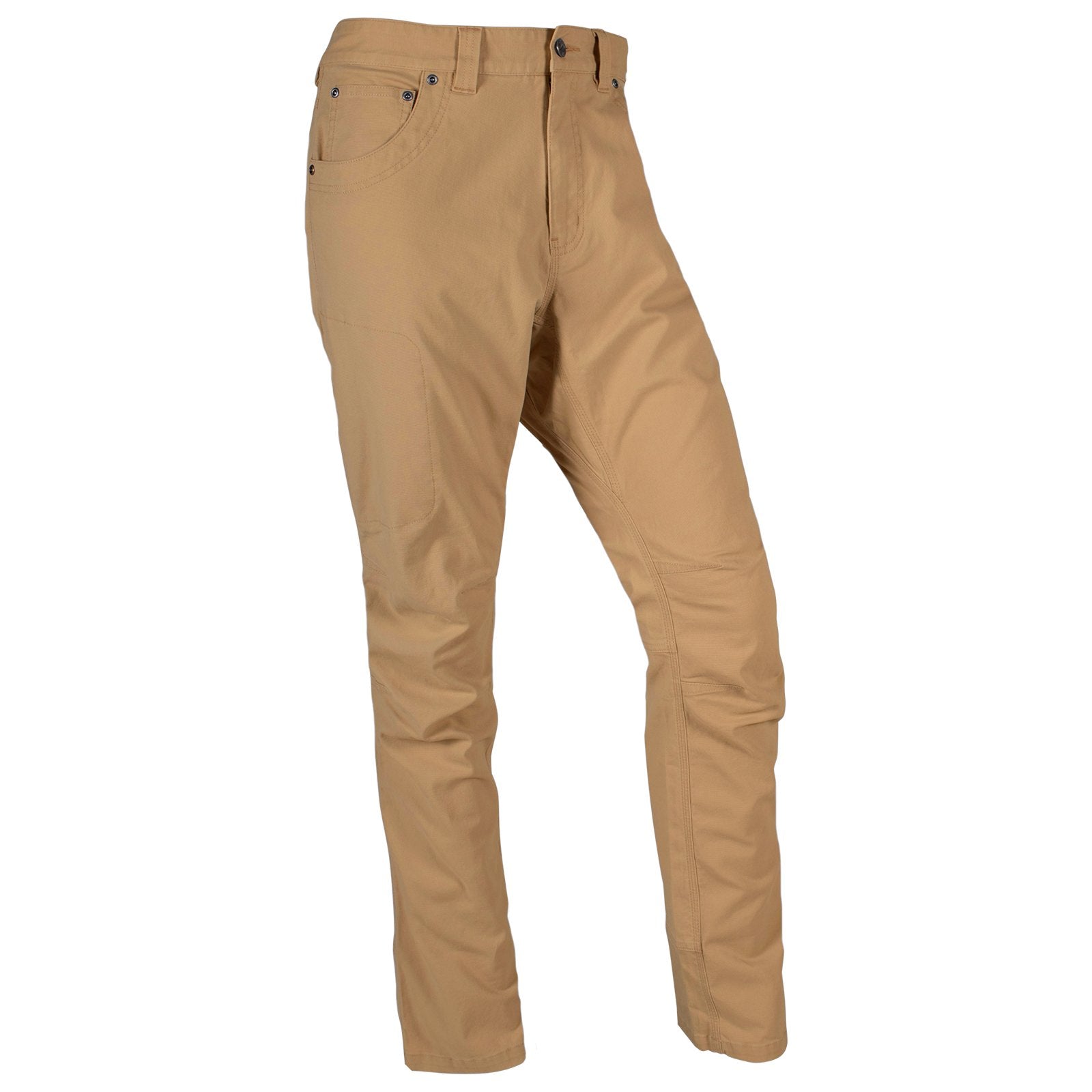
As autumn leaves paint the landscapes with hues of warmth, one iconic garment stands out in the fall ensemble—the timeless flannel shirt. Beyond its classic appeal lies a rich history, a detailed crafting process, and a contemporary presence that transcends mere fashion. At Mountain Khakis we know that flannels are likely a staple in your wardrobe, not only a versatile piece that can be styled various ways but a statement of your commitment to your adventurous spirit.
What Is Flannel?
Flannel, contrary to popular belief, is not a pattern; it's a soft woven fabric celebrated for its unbeatable comfort and cocoon-like warmth. Rooted in a rich history, flannel's journey has been one of adaptation and refinement. While it initially found its identity in the rugged embrace of woven wool, today's flannel garments predominantly feature carefully selected cotton fibers or a blend of premium materials, seamlessly marrying the innate softness of the fabric with exceptional durability. This modern twist ensures that each piece tells a story of comfort, resilience, and timeless style.
The Historical Journey of Flannel
Origins and Early History
The rich roots of flannel stretch back over 400 years, finding their grounding in the rugged landscapes of Wales.¹ It swiftly became a staple for a diverse array of hardworking individuals: farmers tending to their fields, miners delving into the depths of the earth, timbermen shaping the wilderness, and fishermen navigating the unpredictable seas—occupations that demanded not just clothing but a rugged companion that could withstand the rigors of the elements. It was in the 17th century that flannel's influence reached beyond Wales, making its mark in the fashion landscapes of both Wales and France, ultimately beginning a journey that would weave it into the fabric of European style.¹ It’s no wonder that flannel went on to become the quintessential American work shirt.
Flannel in the Modern Era
As the wheels of the industrial revolution turned, so did the journey of flannel, crossing the Atlantic to find a new identity on the shores of America. Here, it became more than just fabric; it became synonymous with the grit and determination of hardworking laborers shaping a nation. The 20th century ushered in a new era for flannel, marking it as more than just workwear. It became an emblem of counterculture, notably finding its place in the rebellious spirit of the '90s grunge movement.
However, flannel has transcended those defining moments. Today, it stands as a timeless staple in every man’s wardrobe, ready for outdoor escapades, a day of hard work, or a polished look in the office.
The Fabrication of Flannel
Materials and Composition
While wool flannel was the original choice, modern flannel embraces a variety of materials. Cotton flannel takes the lead for a soft feel, but wool and synthetic fibers also play crucial roles, each bringing distinct characteristics to the fabric.
The Making Process
Spinning
Flannel's journey begins with the spinning of fibers, where raw materials transform into yarns of varying thickness, influencing the fabric's texture.
Weaving
In the weaving process, these yarns intertwine, forming the base structure of the fabric. The weave type contributes to flannel's characteristic softness.
Napping
Napping, the final touch, involves raising the fibers on the fabric's surface, enhancing its softness and providing the fuzzy texture flannel is known for.²

Flannel in Fashion and Beyond
Flannel in Clothing
Flannel isn't just fabric; it's a rugged companion in your style journey. Flannel is an incredibly versatile fabric, and its uses go far beyond your traditional flannel button-down. You may be wondering how to wear a flannel shirt for men in order to maximize style and comfort. Picture this: pants with a cozy flannel lining that keep you warm in the chill, or flannel shirts paired with leather jackets that blend outdoor grit with urban grace. It's a style that adapts to your adventure, from trailblazing to cityscape conquering, ensuring you stride through life with comfort and timeless flair. While there are countless options for men’s flannel shirts available, it’s essential to find the ones that fit your unique style sensibilities.
Beyond Clothing
Flannel's charm isn't confined to wardrobes; it extends to home décor and beyond reflecting its enduring versatility. From throw pillows to bed sheet sets and more, flannel adds a touch of style and warmth wherever it’s added.How to Wash Flannel
While a flannel shirt is an incredibly durable piece that wears well over time, there are some tips on keeping it soft and comfortable for the long haul. Preserving the essence of flannel is all about showing it some TLC. When it's time for a wash, opt for cold water to keep those colors vibrant and the fabric strong. And when it's time to dry, let it hang and air-dry. Avoid the temptation to crank up the heat, and let the air work its magic. It's not just about keeping your flannel looking fresh; it's about being kind to the environment too. By taking these small steps, you're not only extending the life of your favorite flannel but also doing your part for sustainability.
Flannel vs. Plaid: Clearing the Confusion
While flannel refers to the fabric's texture, plaid denotes a specific pattern. Clearing up this common misconception helps discern the fabric from its often-associated checkered design.
If flannel is the fabric, then plaid is a specific pattern easily identified by horizontal and vertical lines that intersect to form a grid design. By using different colors in the threads, different weights (or thickness) of threads, and different weaving patterns, a designer can create truly unique plaid patterns.³ Put simply, flannels extend well beyond just plaid shirts, incorporating stripes, gingham, and more.
Different patterns and styles of flannels are suitable for a variety of occasions. So are flannels business casual? The answer is yes–depending on the pattern and unique context it’s worn. A plaid flannel shirt can be the perfect go-to for your next trip to the office or happy hour with coworkers.
Flannel's Environmental Impact
Understanding the environmental footprint of flannel is a journey into the realms of eco-conscious practices that shape its production. It begins with the responsible sourcing of materials, where conscientious efforts are made to choose sustainable fibers. This can include organic cotton cultivation, the Better Cotton Initiative (BCI) or the use of recycled materials, reducing the strain on natural resources.
As the fabric moves through the manufacturing process, a pivotal point emerges—sustainable manufacturing. Modern technologies and practices are harnessed to minimize waste, energy consumption. From innovative dyeing techniques that reduce water usage to efficient weaving processes that optimize material utilization, each step is a commitment to environmental stewardship.
In essence, the environmental narrative of flannel extends beyond just the fabric; it intertwines with a larger story of sustainable practices and a commitment to the planet. As consumers, understanding this journey empowers us to make choices that align with a greener, more sustainable future.
Explore Mountain Khakis Flannel Shirts for Men
As the authority in men’s outdoor clothing, Mountain Khakis takes pride in setting the standard for rugged style, durability, and timeless design. When it comes to flannel, we're not just fashion enthusiasts; we're aficionados. Our legacy of crafting outdoor gear that stands up to the elements seamlessly translates into the realm of flannel, where comfort meets adventure.
Our line of flannel shirts, shirt jacs, and flannel lined pants are fan favorites for a reason. They are crafted with high quality materials, attention to detail, and are incredibly durable. Learn more about all the flannel options Mountain Khakis has to offer today.
Sources:
- Montgomery, F. M. (2008). Textiles in America, 1650-1870: A dictionary based on original documents, prints and paintings, Commercial Records, American Merchant’s papers, shopkeepers’ advertisements, and pattern books with original swatches of cloth. Choice Reviews Online, 45(05). https://doi.org/10.5860/choice.45-2419
- Grosicki, Z. J. (2004). Watson’s textile design and colour: Elementary weaves and figured fabrics. Woodhead Publishing Limited.
- Lewis, D. (2015, November 20). A brief history of plaid. Smithsonian.com. https://www.smithsonianmag.com/smart-news/brief-history-plaid-180957342/









Leave a comment